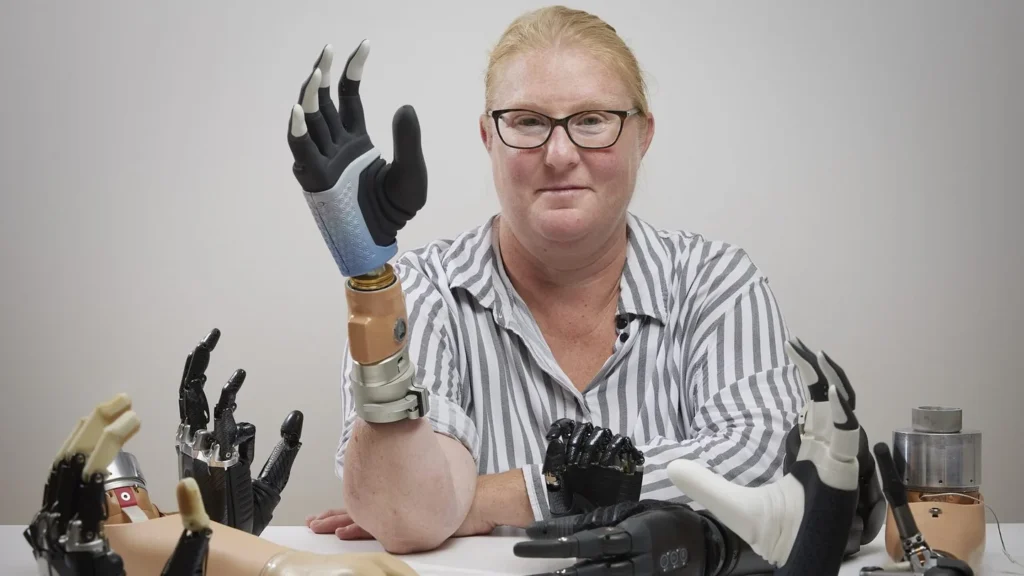
Bionic Hand with Titanium-Fused Nerve Connectivity
In contrast to traditional prosthetic devices, this innovative model establishes a direct connection to a patient’s limb by bridging both bone and nerve interfaces

The incorporation of titanium-fused bone tissue facilitates a direct neural connection for this bionic hand to the patient’s nerves, enhancing its functionality and precision.
Getting used to fake arms and legs is not easy. Just finding the right one isn’t enough. Even if it fits well, it can be hard to move and use properly. Some people’s bodies don’t like fake body parts, even if they are really good quality.
A woman in Sweden lost her right arm in a farming accident more than 20 years ago. She had a tough time with pain and stress for many years. She said it felt like her hand was always in a meat grinder.
A lot of people who lose body parts feel pain that’s not really there. This happens because the signals between the spinal cord and the brain get mixed up. Even when a body part is gone, the nerves are still connected to the brain. This can make the brain think there’s pain when there isn’t.
A major advance in prosthetics has greatly reduced severe phantom pains for a patient who lost her arm. This new artificial arm is made with a special technique that involves titanium-infused bone tissue, along with adjustments to the nerves and muscles. This breakthrough could help many other people with amputations.
The patient’s journey started in 2018 when she volunteered to test a new bionic arm created by a team of engineers and surgeons led by Max Ortiz Catalan. They used a process called osseointegration, where they fused titanium into her remaining bone to create a strong connection for the artificial arm.
This step was challenging because they had to align her bones precisely and fit all the components into a small space. They also had to reorganise the nerves and muscles to make the artificial arm work well with her brain.
Combining osseointegration with surgery, implanted electrodes, and artificial intelligence allowed them to restore her function in an amazing way. This is a significant milestone in the field of advanced limb replacements, especially for below-elbow amputations.
The patient now wears her new prosthetic arm comfortably all day, and it feels like a natural part of her body. It has even reduced her chronic pain. According to the experts, the reduction in pain is due to their combined approach, which helps her use her brain in a similar way as before.
She said, “I have better control over my prosthesis, and most importantly, my pain has gone down. I need much less medication now.”
Never miss any important news. Subscribe to our newsletter.
Related News


British Investor Who Predicted US Slump Warns of Next Crash

I’m a Death Doula: 4 Reasons I Believe Death Isn’t the End


Tech to Reverse Climate Change & Revive Extinct Species

AI Unlocks the Brain’s Intelligence Pathways

XPENG Unveils Iron Robot with 60 Human-like Joints

Can AI Outsmart Humanity?

11 ChatGPT Prompts to Boost Your Personal Brand

Keir Starmer Hints at Possible Tax Hikes on Asset Income

Navigating the Future of AI: Insights from Eric Schmidt
